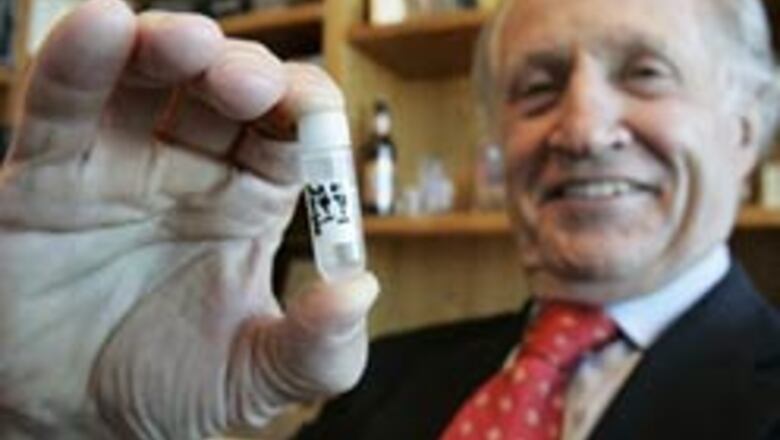
views
Stockholm: Three researchers who pioneered the creation of "designer mice" to track the role of different genes in human development and disease have won the 2007 Nobel medicine prize, Sweden's Karolinska Institute said on Monday.
The prestigious 10 million Swedish crown ($1.54 million) award recognized Mario Capecchi, Martin Evans and Oliver Smithies for helping forge a new and fundamental branch of medicine -- gene targeting.
The Karolinska Institute said the work of the three revealed "the roles of numerous genes in embryonic development, adult physiology, aging and disease".
In 2001, the trio took the Albert Lasker Award for Basic Medical Research, seen as the U.S. version of the Nobel since many of its recipients have gone on to become Nobel laureates.
Italian-born Capecchi is a US citizen, as is Smithies. Evans and Smithies are British-born.
"It's marvelous news both with respect to our laboratory as well as our university," Capecchi told Reuters.
"What we developed is a way of modifying genes in the mouse which allows us to model human diseases, study their pathology as well as ... developing new therapies."
Nobel Committee Secretary Hans Jornvall called new laureate Capecchi a "great example of the American Dream".
According to Howard Hughes Medical Institute, his mother was taken by the Gestapo to the Dachau concentration camp when he was four, forcing him to fend for himself on Italy's streets until he was reunited with her at nine.
The two soon moved to the United States, where he began school without knowing how to read, write or speak English.
Capecchi said part of his prize money would go toward his team's research into child cancer and the study of "how we go for an egg to form a human being".
Gene Therapy
The science community said the Nobel marked well-earned recognition of a branch of research that could pave the way to treatments for genetic illnesses from cancer to cystic fibrosis.
"Gene targeting, a way of altering gene structure and hence function in animals, provides a direct way to investigate the role of particular genes," said Professor Paul Sharpe, Head of Craniofacial Development at King's College London.
"Together this trio of people developed methodologies that have revolutionized the way we study gene function in mammals."
By isolating embryonic stem cells -- which give rise to all the cells in the body -- Evans laid the groundwork for creating genetically altered mice.
Capecchi and Smithies developed the technology to target individual genes in stem cells and mimic the effect of diseases for study and potential gene therapy.
So-called "knockout mice" are the basis for a huge percentage of medical and scientific research done today.
"Since the mid 1990s, this was on everybody's list as something that almost certainly had to win a Nobel prize one day," said Jeremy Berg, director of the U.S. National Institute of General Medical Sciences, which helped fund some of the work.
Medicine is traditionally the first of the Nobels handed out each year.
The prizes for achievement in science, literature and peace bearing the name of Alfred Nobel were first awarded in 1901 according to the will of the Swedish dynamite millionaire.
The Nobel Laureate for physics will be announced on Tuesday, followed by chemistry on Wednesday, literature on Thursday and the Nobel Peace Prize on Friday in Oslo.
Capecchi, born in Verona in 1937, is a Howard Hughes Medical Institute Investigator and Professor of Human Genetics and Biology at the University of Utah in the United States.
Evans, born in 1941, is director of the School of Biosciences and Professor of Mammalian Genetics at Cardiff University in Britain.
Smithies, born in 1925, is Professor of Pathology and Laboratory Medicine at the University of North Carolina in the United States.
















Comments
0 comment